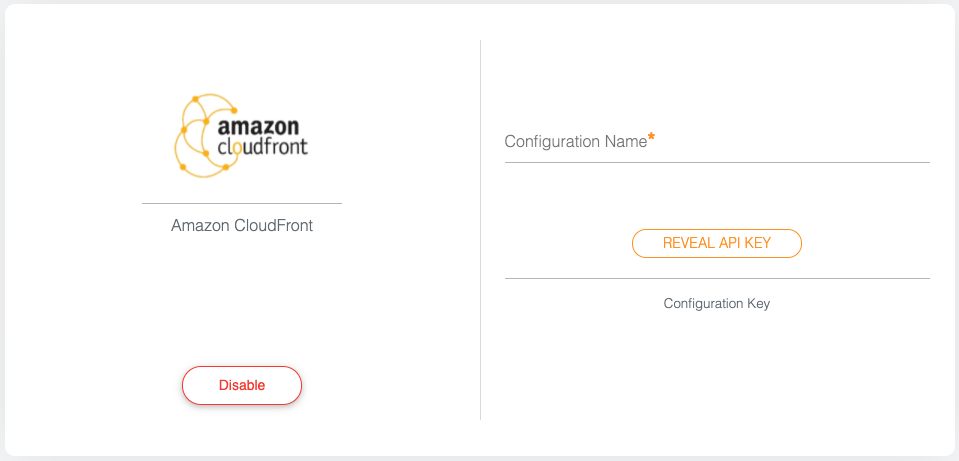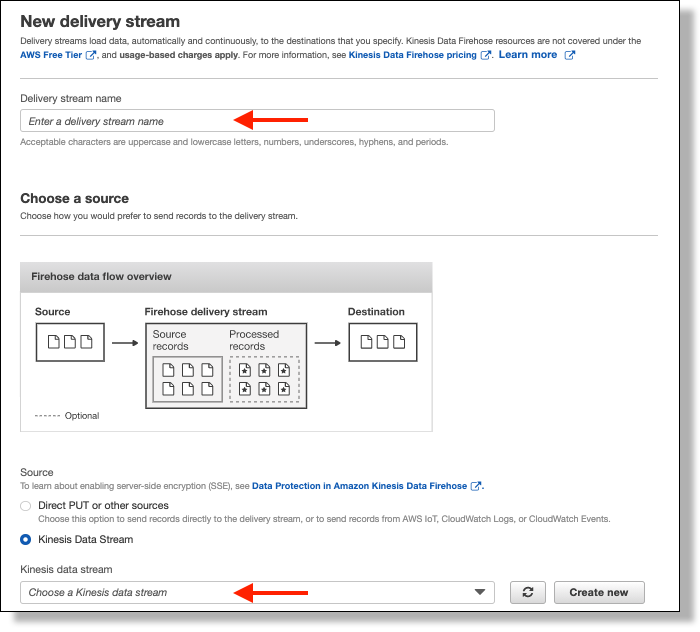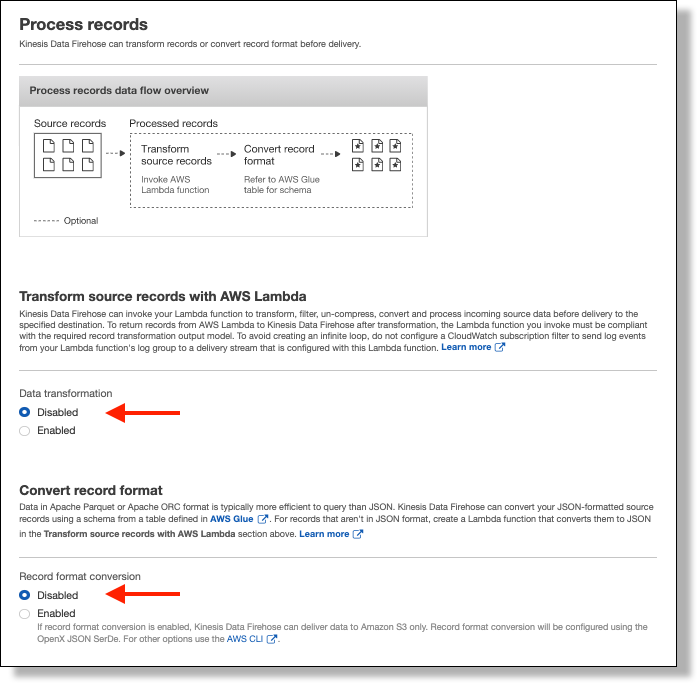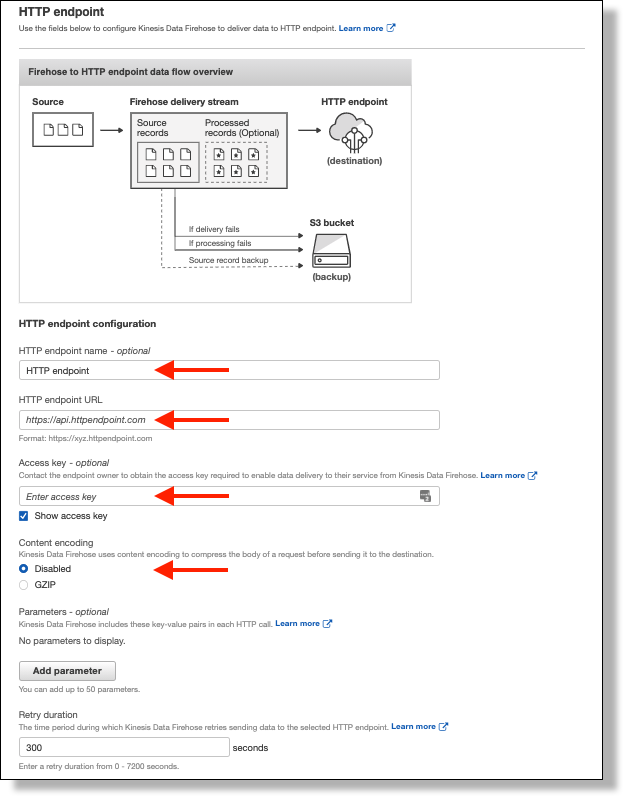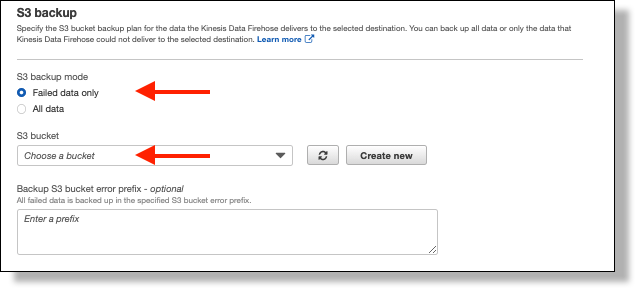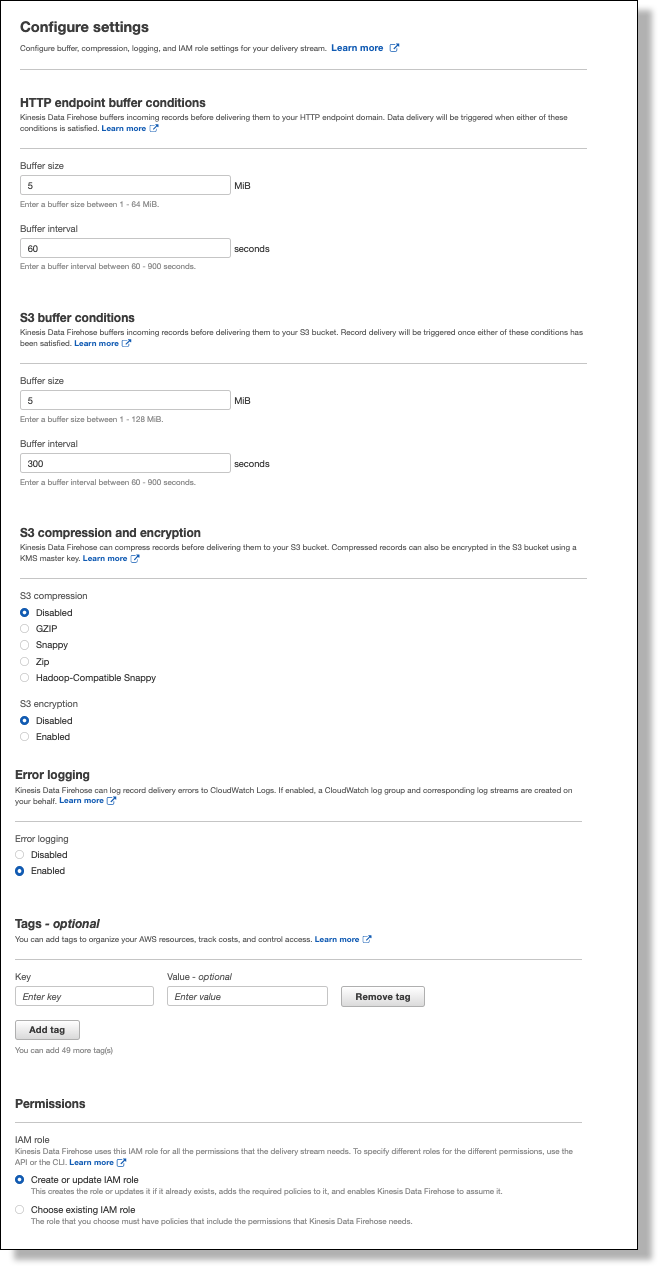CDN collectors
Amazon CloudFront CDN Collector
The Amazon CloudFront CDN Collector by Datazoom makes the following data points automatically collectable in real time and correlatable to data collected from Datazoom application collectors configured with a media player extension.
Prerequisites
Kinesis Data Streams configuration.
An existing Amazon CloudFront distribution configured to send logs to the Kinesis Data Streams setup above. See the Amazon documentation, Creating and using real-time log configurations to configure/enable real-time logging for your Amazon CloudFront distribution. Please be sure to select all available log fields in the configuration options.
Create a Datazoom CloudFront Collector
Review How to add a CDN Collector to start the process.
Give your Collector a name, save it then re-open it. Click the “REVEAL API KEY” and copy your key. You’ll need it in the CloudFront configuration steps below.
Configuring the Kinesis Firehose HTTP endpoint
Follow the steps provided by Amazon to setup a Kinesis Data Firehose Delivery Stream.
Give the configuration a name.
Select “Kinesis Data Stream” as the source and select the Kinesis stream from the popup that you have available from the Prerequisites section above.Leave the default items selected on the “Process Records” screen
Select “HTTP Endpoint” as the destination
Set the following items:
HTTP Endpoint URL: https://streaming.datazoom.io/cdn/v1/logs
Access key: API key copied from the Collector setup aboveSet an S3 bucket as a destination for Failed Data
Leave the remaining items at their default settings
Review your settings
Supported Data Points
Events
Discrete occurrences driven by user interactions or system actions
Metadata
User Details
CMCD
-
Buffer Length (CMCD)
-
Buffer Starvation (CMCD)
-
Content ID (CMCD)
-
Deadline (CMCD)
-
Encoded Bitrate (CMCD)
-
Measured throughput (CMCD)
-
Next Object Request (CMCD)
-
Next Range Request (CMCD)
-
Object Duration (CMCD)
-
Object Type (CMCD)
-
Playback Rate (CMCD)
-
Request ID (CMCD)
-
Requested Maximum Throughput (CMCD)
-
Session ID (CMCD)
-
Startup (CMCD)
-
Stream Type (CMCD)
-
Streaming Format (CMCD)
-
Sub-Request ID (CMCD)
-
Top Bitrate (CMCD)
- Version (CMCD)
Message
Location
Custom Data
Page
Fluxdata
Metrics measuring changing parameters over time
